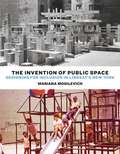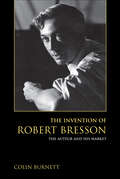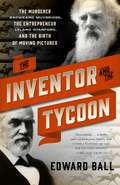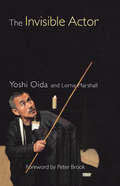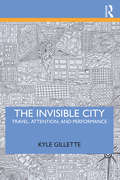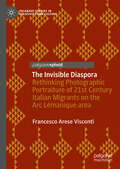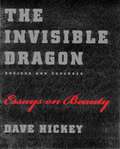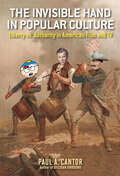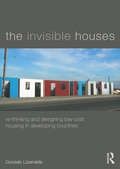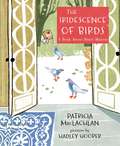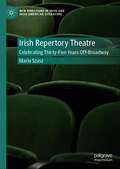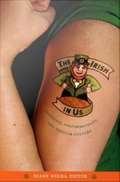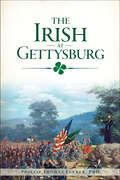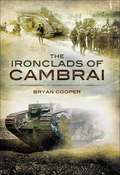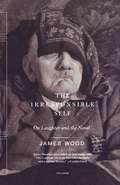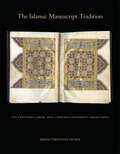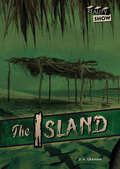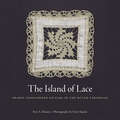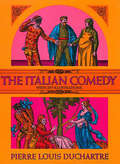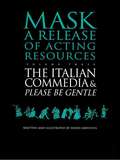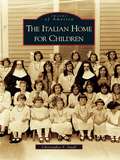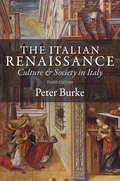- Table View
- List View
The Invention of Public Space: Designing for Inclusion in Lindsay's New York
by Mariana MogilevichThe interplay of psychology, design, and politics in experiments with urban open space As suburbanization, racial conflict, and the consequences of urban renewal threatened New York City with &“urban crisis,&” the administration of Mayor John V. Lindsay (1966–1973) experimented with a broad array of projects in open spaces to affirm the value of city life. Mariana Mogilevich provides a fascinating history of a watershed moment when designers, government administrators, and residents sought to remake the city in the image of a diverse, free, and democratic society.New pedestrian malls, residential plazas, playgrounds in vacant lots, and parks on postindustrial waterfronts promised everyday spaces for play, social interaction, and participation in the life of the city. Whereas designers had long created urban spaces for a broad amorphous public, Mogilevich demonstrates how political pressures and the influence of the psychological sciences led them to a new conception of public space that included diverse publics and encouraged individual flourishing. Drawing on extensive archival research, site work, interviews, and the analysis of film and photographs, The Invention of Public Space considers familiar figures, such as William H. Whyte and Jane Jacobs, in a new light and foregrounds the important work of landscape architects Paul Friedberg and Lawrence Halprin and the architects of New York City&’s Urban Design Group.The Invention of Public Space brings together psychology, politics, and design to uncover a critical moment of transformation in our understanding of city life and reveals the emergence of a concept of public space that remains today a powerful, if unrealized, aspiration.
The Invention of Robert Bresson: The Auteur and His Market
by Colin BurnettChallenging the prevailing notion among cinephiles that the auteur is an isolated genius interested primarily in individualism, Colin Burnett positions Robert Bresson as one whose life's work confronts the cultural forces that helped shape it. Regarded as one of film history's most elusive figures, Bresson (1901–1999) carried himself as an auteur long before cultural magazines, like the famed Cahiers du cinéma, advanced the term to describe such directors as Jacques Tati, Alfred Hitchcock, and Jean-Luc Godard. In this groundbreaking study, Burnett combines biography with cultural history to uncover the roots of the auteur in the alternative cultural marketplace of midcentury France.
The Inventor and the Tycoon: A Gilded Age Murder and the Birth of Moving Pictures
by Edward BallFrom the National Book Award-winning author of Slaves in the Family, a riveting true life/true crime narrative of the partnership between the murderer who invented the movies and the robber baron who built the railroads. One hundred and thirty years ago Eadweard Muybridge invented stop-motion photography, anticipating and making possible motion pictures. He was the first to capture time and play it back for an audience, giving birth to visual media and screen entertainments of all kinds. Yet the artist and inventor Muybridge was also a murderer who killed coolly and meticulously, and his trial is one of the early instances of a media sensation. His patron was railroad tycoon (and former California governor) Leland Stanford, whose particular obsession was whether four hooves of a running horse ever left the ground at once. Stanford hired Muybridge and his camera to answer that question. And between them, the murderer and the railroad mogul launched the age of visual media. Set in California during its frontier decades, The Tycoon and the Inventor interweaves Muybridge's quest to unlock the secrets of motion through photography, an obsessive murder plot, and the peculiar partnership of an eccentric inventor and a driven entrepreneur. A tale from the great American West, this popular history unspools a story of passion, wealth, and sinister ingenuity.
The Invisible Actor
by Lorna Marshall Yoshi OidaFirst Published in 1998. Routledge is an imprint of Taylor & Francis, an informa company.
The Invisible Body in Chinese Calligraphy and Painting (China Academic Library)
by Jianping GaoThis book explores Chinese calligraphy and painting from an aesthetic perspective, using modern visual theory to analyze the theoretical implications of the relationship between ancient Chinese literati painting and calligraphy, in contrast to Western aesthetic traditions. It highlights the action-oriented nature of Chinese calligraphy and painting, demonstrating that these art forms should be viewed not as static images, but as dynamic traces of the artist’s expressive movements. This book is ideal for those interested in aesthetics, art historians, scholars of visual theory, and anyone fascinated by the dynamic essence of Chinese artistic traditions.
The Invisible City: Travel, Attention, and Performance
by Kyle GilletteThe Invisible City explores urban spaces from the perspective of a traveller, writer, and creator of theatre to illuminate how cities offer travellers and residents theatrical visions while also remaining mostly invisible, beyond the limits of attention. The book explores the city as both stage and content in three parts. Firstly, it follows in pattern Italo Calvino's novel Invisible Cities, wherein Marco Polo describes cities to the Mongol emperor Kublai Khan, to produce a constellation of vignettes recalling individual cities through travel writing and engagement with artworks. Secondly, Gillette traces the Teatro Potlach group and its ongoing immersive, site-specific performance project Invisible Cities, which has staged performances in dozens of cities across Europe and the Americas. The final part of the book offers useful exercises for artists and travellers interested in researching their own invisible cities. Written for practitioners, travellers, students, and thinkers interested in the city as site and source of performance, The Invisible City mixes travelogue with criticism and cleverly combines philosophical meditations with theatrical pedagogy.
The Invisible Diaspora: Rethinking Photographic Portraiture of 21st Century Italian Migrants on the Arc Lémanique area (Palgrave Studies in Creativity and Culture)
by Francesco Arese ViscontiThis book reviews photographic portrayals of contemporary Italian migrants living in the area between Lausanne and Geneva in Switzerland (Arc Lémanique). Drawing from the archives of Swiss-French illustrated magazines (L’Illustré and L’Hebdo) and other online publications, the author analyses the distinctive photographic representations of Italian migrants in Switzerland from the 1960s to 2019 and uses them to produce new photographic portraits of the 21st century Italian migrants on the Arc Lémanique. Challenging the narrative on the brain drain, the book showcases 24 portraits of Italians living in Switzerland with the aim to unveil the unique and complex nature of a new Italian diaspora in the age of globalization. The combination of theories, concepts, and methodologies used reflects the interdisciplinary and creative approach of this research, which brings together culture, identity, photography, and creative process. Based on the lived experience of the author as an Italian migrant in Switzerland, the book offers a profound analysis of the phenomenon of migration and identity through visual communication. The interviews included in chapter 4 were originally conducted and recorded by the author in Italian. The English version is the result of a translation done with the help of artificial intelligence. The author has subsequently corrected and revised the text further in an endeavour to refine the work stylistically.
The Invisible Dragon: Essays on Beauty
by Dave HickeyThe Invisible Dragon made a lot of noise for a little book When it was originally published in 1993 it was championed by artists for its forceful call for a reconsideration of beauty--and savaged by more theoretically oriented critics who dismissed the very concept of beauty as naive, igniting a debate that has shown no sign of flagging. With this revised and expanded edition, Hickey is back to fan the flames. More manifesto than polite discussion, more call to action than criticism, The Invisible Dragon aims squarely at the hyper-institutionalism that, in Hickey's view, denies the real pleasures that draw us to art in the first place. Deploying the artworks of Warhol, Raphael, Caravaggio, and Mapplethorpe and the writings of Ruskin, Shakespeare, Deleuze, and Foucault, Hickey takes on museum culture, arid academicism, sclerotic politics, and more--all in the service of making readers rethink the nature of art. A new introduction provides a context for earlier essays--what Hickey calls his "intellectual temper tantrums. " A new essay, "American Beauty," concludes the volume with a historical argument that is a rousing paean to the inherently democratic nature of attention to beauty. Written with a verve that is all too rare in serious criticism, this expanded and refurbished edition of The Invisible Dragon will be sure to captivate a new generation of readers, provoking the passionate reactions that are the hallmark of great criticism.
The Invisible Hand in Popular Culture: Liberty vs. Authority in American Film and TV
by Paul A. Cantor“Analyzes how ideas about economics and political philosophy find their way into everything from Star Trek to Malcolm in the Middle.” —Wall Street JournalPopular culture often champions freedom as the fundamentally American way of life and celebrates the virtues of independence and self-reliance. But film and television have also explored the tension between freedom and other core values, such as order and political stability. What may look like healthy, productive, and creative freedom from one point of view may look like chaos, anarchy, and a source of destructive conflict from another. Film and television continually pose the question: Can Americans deal with their problems on their own, or must they rely on political elites to manage their lives?In this groundbreaking work, Paul A. Cantor—whose previous book, Gilligan Unbound, was named one of the best nonfiction books of the year by the Los Angeles Times—explores the ways in which television shows such as Star Trek, The X-Files, South Park, and Deadwood and films such as The Aviator and Mars Attacks! have portrayed both top-down and bottom-up models of order. Drawing on the works of John Locke, Adam Smith, Alexis de Tocqueville, and other proponents of freedom, Cantor contrasts the classical liberal vision of America?particularly its emphasis on the virtues of spontaneous order?with the Marxist understanding of the “culture industry” and the Hobbesian model of absolute state control.The Invisible Hand in Popular Culture concludes with a discussion of the impact of 9/11 on film and television, and the new anxieties emerging in contemporary alien-invasion narratives: the fear of a global technocracy that seeks to destroy the nuclear family, religious faith, local government, and other traditional bulwarks against the absolute state.
The Invisible Houses: Rethinking and designing low-cost housing in developing countries
by Gonzalo LizarraldeWinner of the ACSA/AIA Housing Design Education Award! There is an increased interest among architects, urban specialists and design professionals to contribute to solve "the housing problem" in developing countries. The Invisible Houses takes us on a journey through the slums and informal settlements of South Africa, India, Colombia, Honduras, El Salvador, Cuba, Haiti and many other countries of the Global South, revealing the challenges of, and opportunities for, improving the fate of millions of poor families. Stressing the limitations of current approaches to housing development, Gonzalo Lizarralde examines the short-, mid- and long-term consequences of housing intervention. The book covers – among others – the issues of planning, design, infrastructure and project management. It explains the different variables that need to be addressed and the causes of common failures and mistakes, while outlining successful strategies based on embracing a sustained engagement with the complexity of processes that are generally invisible.
The Iridescence of Birds: A Book About Henri Matisse
by Patricia MacLachlanIf you were a boy named Henri Matisse who lived in a dreary town in northern France, what would your life be like? Would it be full of color and art? Full of lines and dancing figures? Find out in this beautiful, unusual picture book about one of the world's most famous and influential artists by acclaimed author and Newbery Medal-winning Patricia MacLachlan and innovative illustrator Hadley Hooper.
The Irish Repertory Theatre: Celebrating Thirty-Five Years Off-Broadway (New Directions in Irish and Irish American Literature)
by Maria SzaszThe Irish Repertory Theatre: Celebrating Thirty-Five Years Off-Broadway is the first book-length history of the multi-award winning Off-Broadway Irish Repertory Theatre Company, from its beginning in 1988 to its thirty-fifth season in 2023. The book considers how the Irish Rep’s plays and musicals reflect the Irish diaspora, the relationship between Ireland and America, and what it means to be Irish and Irish American, both historically, and in the twenty-first century, including how the Irish Rep is showcasing more diverse voices and experiences, from women, the LGBTQIA+ community, and Irish and Irish American people of color.
The Irish in Us: Irishness, Performativity, and Popular Culture
by Diane NegraOver the past decade or so, Irishness has emerged as an idealized ethnicity, one with which large numbers of people around the world, and particularly in the United States, choose to identify. Seeking to explain the widespread appeal of all things Irish, the contributors to this collection show that for Americans, Irishness is rapidly becoming the white ethnicity of choice, a means of claiming an ethnic identity while maintaining the benefits of whiteness. At the same time, the essayists challenge essentialized representations of Irishness, bringing attention to the complexities of Irish history and culture that are glossed over in Irish-themed weddings and shamrock tattoos. Examining how Irishness is performed and commodified in the contemporary transnational environment, the contributors explore topics including Van Morrison's music, Frank McCourt's writing, the explosion of Irish-themed merchandising, the practices of heritage seekers, the movie The Crying Game, and the significance of red hair. Whether considering the implications of Garth Brooks's claim of Irishness and his enormous popularity in Ireland, representations of Irish masculinity in the TV series Buffy the Vampire Slayer and Angel, or Americans' recourse to a consoling Irishness amid the racial and nationalist tensions triggered by the events of September 11, the contributors delve into complex questions of ethnicity, consumerism, and globalization. Ultimately, they call for an increased awareness of the exclusionary effects of claims of Irishness and for the cultivation of flexible, inclusive ways of affiliating with Ireland and the Irish. Contributors. Natasha Casey, Maeve Connolly, Catherine M. Eagan, Sean Griffin, Michael Malouf, Mary McGlynn, Gerardine Meaney, Diane Negra, Lauren Onkey, Maria Pramaggiore, Stephanie Rains, Amanda Third
The Irish of Gettysburg (Civil War Ser.)
by Philip Thomas TuckerAt the outbreak of the Civil War, Irish citizens on both sides of the Mason-Dixon answered the call to arms. This was most evident at the Battle of Gettysburg.Louisiana Irish Rebels charged with the cry "We are the Louisiana Tigers!" Irish soldiers of the Alabama Brigade and the Texas Brigade launched assaults on the line's southern end at Little Round Top. During Pickett's Charge, Gaelic brothers fought each other as determined Irishmen of the Sixty-Ninth Pennsylvania Volunteer Infantry repelled Irish of the Virginia Brigade in one of the most decisive moments in American history. Author Phillip Thomas Tucker reveals the compelling story.
The Ironclads of Cambrai: The First Great Tank Battle (Cassell Military Paperbacks Ser.)
by Bryan CooperWhen tanks, the newly invented British weapon, were used for the first time in a mass attack on November 20 1917, they not only achieved one of the most remarkable successes of the First World War but set the pattern for the future of mechanized warfare. For the first time in three years of bloody trench warfare, epitomized by the slaughter at Passchendaele which was then reaching its climax, tanks brought about a breakthrough of the massive German defense system of the Hindenburg Line, followed up by British infantry and cavalry divisions. They were supported for the first time by low flying fighter aircraft of the Royal Flying Corps. The initial victory at Cambrai brought cheering crowds into the streets of London and the ringing of church bells in celebration. In seemed possible that the success might bring about the final defeat of Germany. But the British High Command failed to exploit the success. Generals who still dreamt of massive cavalry charges had not had much faith in this strange new weapon that had been brought to them funded initially by the Royal Navy at the behest of Winston Churchill who was then First Lord of the Admiralty and did see its value. The High Command did not really believe the breakthrough was possible and tragically miscalculated the necessary steps to follow it up. Within days the Germans counterattacked and regained much of the ground that the British had won. What could have been the final victory was delayed for another year.
The Irresponsible Self: On Laughter and the Novel
by James Wood"James Wood has been called our best young critic. This is not true. He is our best critic; he thinks with a sublime ferocity." - Cynthia Ozick. Following the collection The Broken Estate-- which established James Wood as the leading critic of his generation-- The Irresponsible Self confirms Wood's preeminence, not only as a discerning judge but also as an appreciator of contemporary novels.
The Islamic Manuscript Tradition: Ten Centuries of Book Arts in Indiana University Collections
by Christiane GruberOver the course of ten centuries, Islam developed a rich written heritage that is visible in paintings, calligraphies, and manuscripts. The Islamic Manuscript Tradition explores this aspect of Islamic history with studies of the materials and tools of literate culture, including pens, inks, and papers, Qur'ans, Persian and Mughal illustrated manuscripts, Ottoman devotional works, cartographical manuscripts, printed books, and Islamic erotica. Seven essays present new scholarship on a wide range of topics including collection, miniaturization, illustrated devotional books, the history of the printing press in Islamic lands, and the presence and function of erotic paintings. This beautifully produced volume includes 111 color illustrations and provides a valuable new resource for students and scholars of Islamic art.
The Island (Reality Show)
by D. A. GrahamWhen you love a show, you jump at the chance to be on it, right? That's how Ethan felt when he signed up for a survival reality TV competition. But once he and the other nine contestants are left on an uninhabited island with no technology to help them, he realizes he's in over his head. The contestants must find food and shelter as well as compete in a series of tasks. In a show that's based on ruthless competition, he will somehow have to befriend some other contestants to help him if he wants to make it to the end.
The Island of Lace: Drawn Threadwork on Saba in the Dutch Caribbean
by Eric A. EliasonNicknamed the “Island of Lace,” the Caribbean island of Saba is the smallest special municipality in the Netherlands. Folklorist Eric A. Eliason, at the behest of the president of the Saba Lace Ladies’ Foundation and Saba’s director of tourism, traveled to the island with the intent to document the history and patterns of Saba lace. Born out of his research, The Island of Lace tells the story of lacework’s central role in Saba’s culture, economy, and history. Accompanied by over three hundred of Scott Squire’s intimate photographs of lace workers and their extraordinary island society, this volume brings together in one place an as-complete-as-possible catalog of the rich designs worked by Saban women. For 130 years, the practice of drawn threadwork—also known as Spanish work, fancy work, lacework, or Saba lace—has shaped the lives of Saban women. And yet, as the younger generation moves away from the island, it still survives. Sabans use drawn threadwork to symbolize the uniqueness of their island and express the ingenuity, diligence, bold inventiveness, pride in workmanship, love of beauty, and respect for tradition that define the Saban spirit. Along with recording and honoring the creative legacy of generations of Saban women, this book serves as a guide to folk-art lace patterns from Saba so that practitioners can reference and perhaps re-create this work. The Island of Lace is the most comprehensive volume on this singular tradition ever published.
The Italian Comedy
by Pierre Louis DuchartreIllustrated history of the beginnings, growth and influence of the commedia dell' arte. Describes improvisations, staging, marks, scenarios, acting troupes, and origins.
The Italian Commedia and Please be Gentle
by David GriffithsFocusing on Commedia Dell'Arte, this work provides a historical and critical commentary of the Commedia. It highlights common factors between this genre and that of the Japanese Noh theatre. The author proposes six similarities: characters familiar to their audience and masked, minimal properties and scenery with the focus on the actor, the "families" of performers, a sharp mind as well as an agile body, a professional living on these skills and patronage, and a knowledgeable audience. Complementing this book is the play "Please Be Gentle" which explores the various tricks and devices of Commedia Dell'Arte acting.
The Italian Home for Children
by Christopher F. SmallAs it ravaged the world, the influenza epidemic of 1918 devastated Boston's congested North End and left hundreds of orphans in its wake. Touched by this crisis, a Roman Catholic priest and a group of Italian Americans founded the first home for Italian children in Massachusetts. Franciscan Sisters devoted 24 hours a day to providing the children with a safe, loving, and spiritual environment. In addition, the home provided educational support for its residents. Over time, the changing needs of children mandated that the agency change the nature of its services from custodial care to treatment. In 1974, in response to the changing political and social climate, the agency became the Italian Home for Children. Today, it is a nonprofit, nonsectarian residential treatment facility with a capacity for 61 children of all races, nationalities, and religions. The images in The Italian Home for Children document milestones in the organization's history: the devastating influenza epidemic, the Missionary Franciscan Sisters of the Immaculate Conception, Christmas plays, a visit from Joe DiMaggio, trips to Canobie Lake Park in the summer, the Tony Martin benefit performance at Boston Garden, and the home as it is today--a refuge for children in the most severe crises.
The Italian Painters of the Renaissance
by Bernard BerensonImmerse yourself in the captivating world of Renaissance art with Bernard Berenson's authoritative and insightful book, "The Italian Painters of the Renaissance." Renowned as one of the foremost art historians of the 20th century, Berenson offers a profound and comprehensive analysis of the artists and masterpieces that defined this golden age of creativity and innovation.In "The Italian Painters of the Renaissance," Berenson meticulously examines the works of key figures such as Leonardo da Vinci, Michelangelo, Raphael, Titian, and Botticelli, among others. Through his erudite and engaging narrative, he explores the distinct styles, techniques, and contributions of these artists, shedding light on how they collectively transformed the art world and laid the foundation for modern Western art.Berenson delves into the historical and cultural context of the Renaissance, providing readers with a deeper understanding of the social, political, and philosophical currents that influenced these painters. He eloquently discusses the interplay between art and humanism, the revival of classical antiquity, and the burgeoning spirit of scientific inquiry that characterized the period."The Italian Painters of the Renaissance" is not just a study of art history; it is a celebration of the unparalleled genius and enduring legacy of Renaissance artists. Bernard Berenson's passion for the subject and his scholarly rigor shine through every page, offering readers a timeless exploration of one of the most dynamic and influential periods in art history.Whether you are an avid art lover or new to the subject, this book provides a comprehensive and inspiring overview of the Italian Renaissance, inviting you to appreciate the beauty and significance of its artistic achievements. Bernard Berenson's work remains a cornerstone in the study of Renaissance art, ensuring that the brilliance of this era continues to captivate and educate future generations.
The Italian Renaissance: Culture and Society in Italy, Third Edition
by Peter BurkePeter Burke presents a social and cultural history of the Italian Renaissance. He discusses the social and political institutions that existed in Italy during the fifteenth and sixteenth centuries, and he analyses the ways of thinking and seeing that characterized this period of extraordinary artistic creativity.
The Italian Table (Food & Wine)
by The Editors of Food & WineThe editors of Food & Wine Magazine present Food & Wine The Italian Table.
